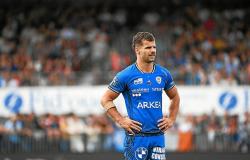The artist Ben, known for his “writings” in all their forms, died this Wednesday. He was found dead at his home in Nice. According to BFMTV and Nice morning, it would be a suicide by firearm. An investigation was opened to elucidate the circumstances of the death.
His wife, Annie, died in recent days, apparently following a stroke.
The death was quickly confirmed by Christian Estrosi, mayor of Nice: “I am upset. My friend Ben, this wonderful artist who embodies a large part of the culture in Nice has left us. Yesterday, I learned of the disappearance of Annie, his wife. They are reunited as they always have been. The Nice school loses one of its main founders. I miss him already. We already miss him terribly. The City will pay tribute to him at the height of his genius. Thoughts for his daughter Eva, who is coping with admirable courage, I know. »
“The world of culture is losing a legend,” Minister of Culture Rachida Dati wrote on social media.
Art, a family affair
Benjamin Vautier was born on July 18, 1935 in Naples. Art already flows in his veins since he is the great-grandson of the painter Marc Louis Benjamin Vautier.
When the Second World War broke out, the family left for several countries, starting with Switzerland, the father’s country. The toddler and his mother settled in Nice in 1949. It was in this city that, once an adult, Benjamin Vautier opened a boutique which quickly became a haunt for many rising artists and intellectuals.
He embarked on an artistic career, under the pseudonym Ben. In 1953, it was his first draft with written words. In 1959, he began working on writing and graphics, particularly on people in the street.
Married to Annie since 1964
It was at this time that he met Annie Baricalla. They married in 1964. Together they had two children, a girl and a boy.
Throughout the 1960s, Ben signed or wrote about whatever he found. He then launches “appropriation”, a notion according to which everything is art. In 1962, he joined the Fluxus movement, avant-garde, advocating “attitude” art.
It is becoming more and more present on the national cultural scene. And in the 1980s, after a stint in Berlin, it took on an international dimension. His studio is the whole world, his canvas can be trash like a wall.
Instantly recognizable writing
His works, often black panels with a message in this immediately recognizable rounded writing with large dots on the “i”, are exhibited in the largest museums: MoMa in New York, the Pompidou Center, the National Museum of Modern Art in Paris, MAC of Marseille and Lyon…
His art allows him to address all the themes that interest him: the place of art, the ego, doubt, survival… And as for him everything is art, he quickly agreed to broadcast it on consumer products, such as pencils, clothes, bags, satchels, umbrellas, etc.
In 1953, his first “writings” were “We must eat. You have to sleep “. He closed his eyes for the last time, but will indeed survive through his art.






